Corrective maintenance refers to the tasks aimed at repairing equipment that has malfunctions. This type of maintenance corrects errors and flaws in the devices, allowing them to return to their original function.
Unlike preventive maintenance, which is systematic, scheduled, and takes place even if the devices do not show signs of failure, corrective maintenance is executed after an irregularity has occurred.
Most failures can be avoided if preventive maintenance plans are implemented. Nevertheless, in some cases, corrective maintenance is unavoidable and might be applied to equipment with low levels of criticality, whose failures have a minimal impact on the company’s productivity.
How are corrective maintenance needs identified?
Corrective maintenance processes can occur due to an unexpected failure or when an additional problem is detected during a routine inspection or even after a scheduled preventive maintenance stop. While performing corrective maintenance work, the asset is repaired, restored, or replaced as needed.
There are two types of failure: potential and functional. When there is a break in production due to a failure that is still at an early stage, which indicates that there is something wrong, but the equipment remains functional, we speak of a potential failure. If the fault is unfixed, it can lead to a complete stop. In this case, we call it a functional failure. It means the equipment is no longer able to perform its function.
Advantages of Corrective Maintenance
- No planning required
Since maintenance takes place after a failure in a specific component has been identified, there is no need to draw up a complex plan in advance.
- A most suitable solution for particular cases
If the costs of stoppage and repair due to failure are lower than the investment in preventive maintenance plans, it makes sense to opt for corrective maintenance.
Disadvantages of Corrective Maintenance
- Forced stops
Unexpected failures lead to forced stops due to the immediate unavailability of the necessary parts, drastically reducing productivity and, consequently, invoicing. In addition, it may also happen that there is no maintenance technician available to resolve the issue at the moment.
- Reduces asset life
This type of maintenance does not protect the equipment, exponentially reducing its useful life.
- Higher long-term costs
Corrective maintenance may incur higher costs due to the drop in production, leading to sales decrease due to non-compliance with deadlines.
Machinery and equipment have undergone remarkable developments over time, becoming increasingly sophisticated. It implies a continuous and rigorous improvement in their maintenance processes. That is why there must be a maintenance plan that combines different kinds of procedures, meaning that corrective maintenance can be used as a strategy or combined with other active maintenance strategies, not just when no other plan is adopted.
At Meivcore, we focus on customers’ needs. Therefore, we have both preventive and corrective maintenance plans available. We seek to find the most suitable type of maintenance for each sort of company and equipment. According to its value and priority, and taking into account the investment possibilities of your brand, we will deliver the best solution.


 Português
Português Español
Español Français
Français